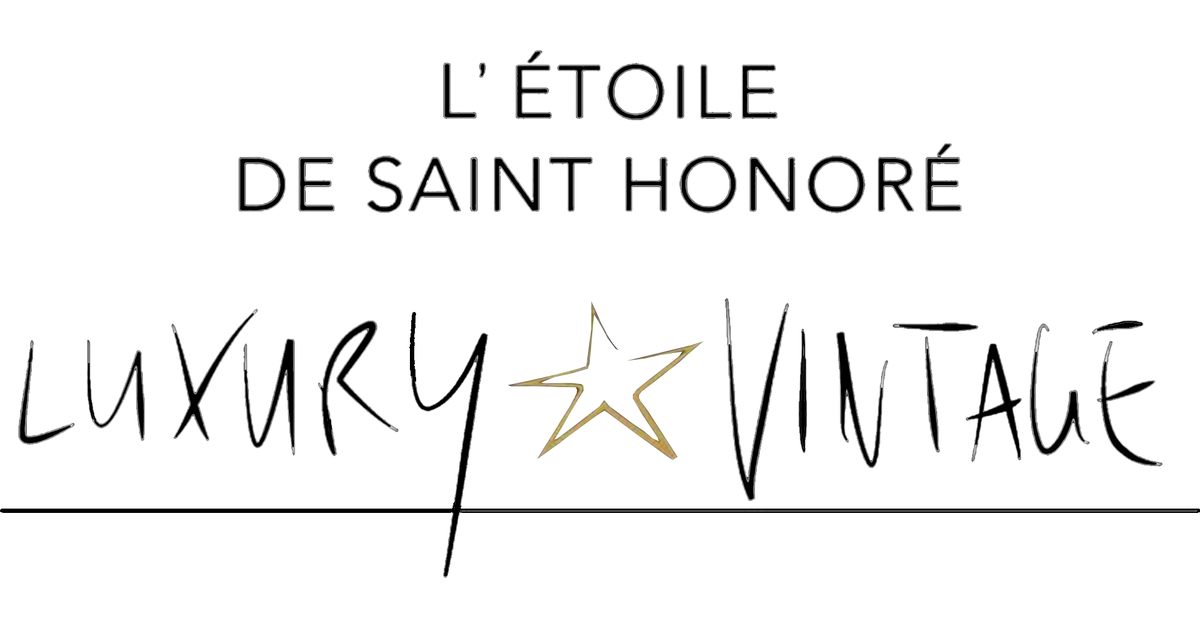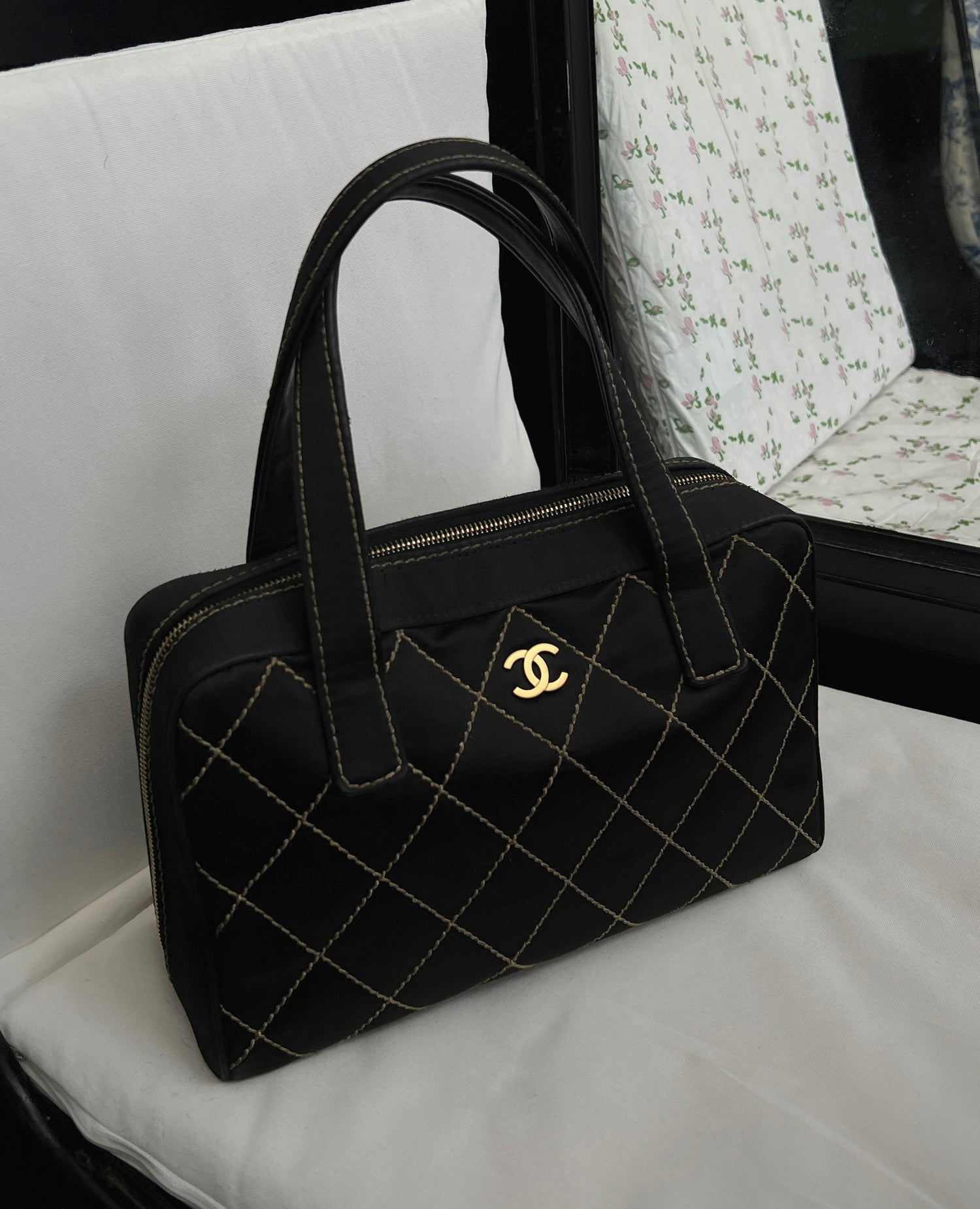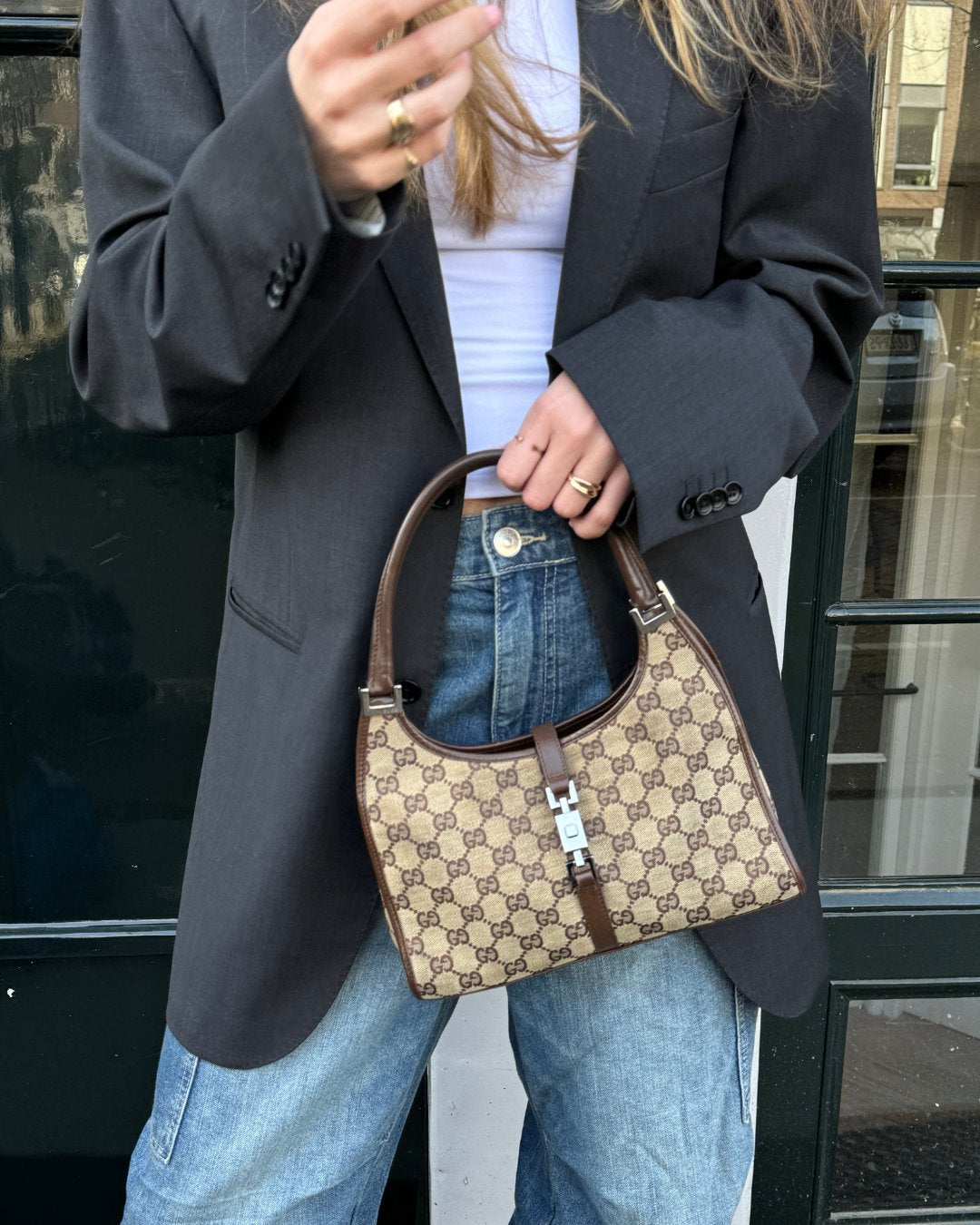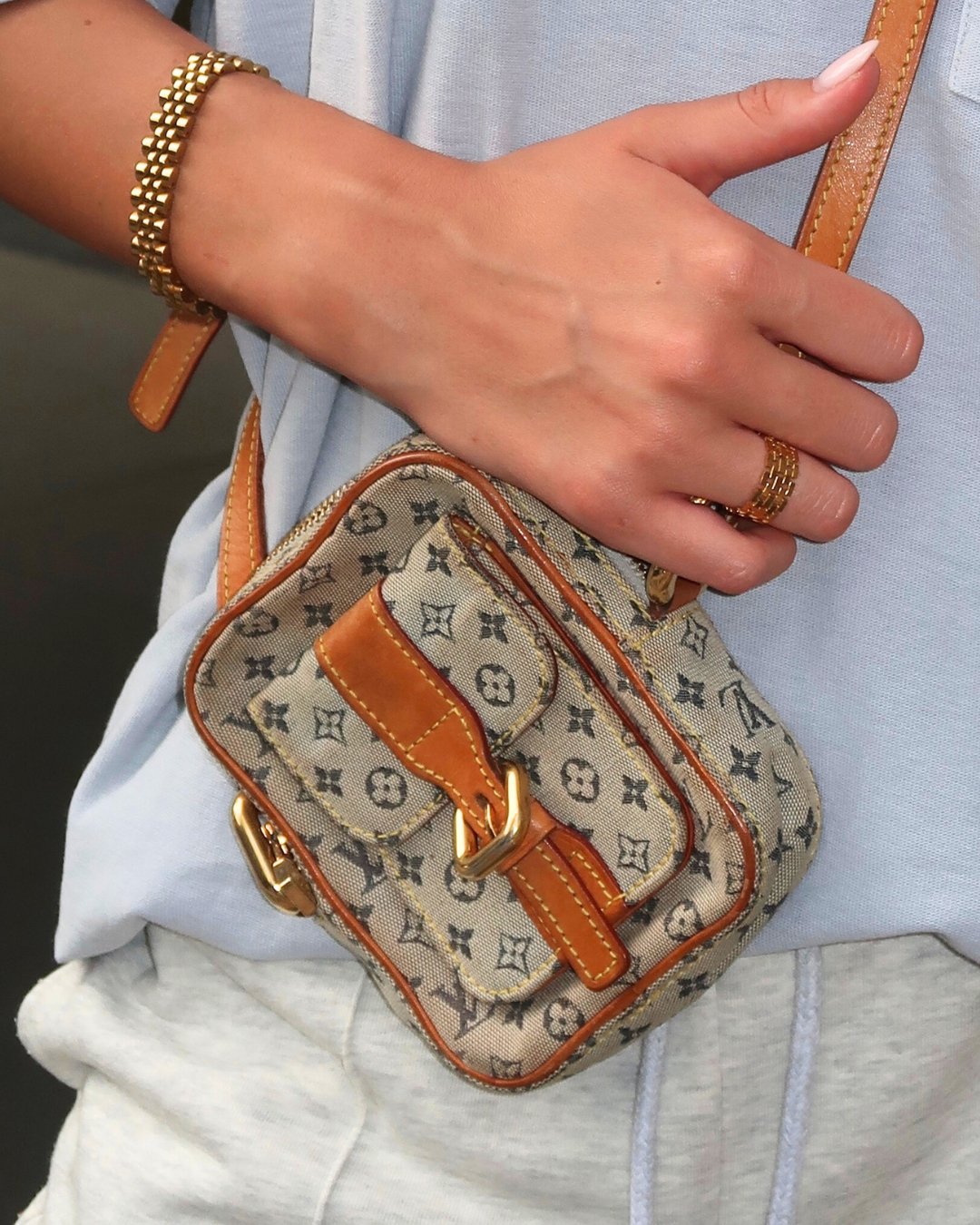From a modest leather workshop in Florence to one of the world’s most celebrated luxury brands, Gucci’s story is as much about timeless elegance as it is about creative resilience. For lovers of handbags and high fashion, this is a journey through provenance, craftsmanship, and design icons that have defined style across generations.
A Vision Rooted in Travel & Craft
It all began with Guccio Gucci, born in Florence in 1881 to a family of humble, skilled artisans. His early years working as a bellboy at London’s prestigious Savoy Hotel exposed him to the refined luggage of the global elite—an experience that would shape his vision. After returning to Italy and honing his leatherwork at Franzi, he launched his own leather goods business in 1921, on Florence’s Via della Vigna Nuova, blending Tuscan craftsmanship with stylish sensibilities.
Photo: pinterest.com
Inventiveness in Adversity: Materials and Motifs
By the 1930s, international trade restrictions made leather scarce. Gucci responded with ingenuity—crafting the now-signature “Diamante” canvas woven from hemp and jute, its diamond pattern became a visual icon of smart, elegant adaptation. Later, after WWII, limited resources led to another breakthrough: Gucci’s bamboo-handled bags. Lightweight yet durable, the Bamboo Bag turned necessity into a hallmark of enduring style.
Photo: pinterest.com
Equestrian Inspiration and Iconic Accessories
Equestrian elements have always been essential to Gucci’s identity. In the early decades, hardware inspired by saddlery—like stirrup and horse bit motifs—appeared on leather goods and, later, on the iconic loafers and bags. These designs caught the eye of elite fashion circles and paved the way for even more iconic creations.
Photo: harpersbazaar.com
A Global Brand and Celebrity Appeal
Under the leadership of Guccio’s sons—Aldo, Rodolfo, and Vasco—the brand expanded swiftly, opening stores in Rome (1938), Milan (early 1950s), and New York (opened just weeks before Guccio passed away in early 1953). Around that time, the Horsebit loafer and red-green-red web stripe became instant status symbols. The Flora scarf, designed for Princess Grace of Monaco in 1966, added an artistic flourish to Gucci’s legacy.
The 1960s also introduced the double-G logo, honouring the founder and eventually becoming the house’s central emblem. Gucci’s boutiques became pilgrimage sites for fashion-savvy traveler's and celebrities alike, reaching cities like Tokyo, Paris, and expanding deeper into the U.S. and Middle East.
Photo: pinterest.com
Family Drama and Corporate Reinvention
The brand’s success was shadowed by internal tensions and legal battles during the 1980s—ultimately leading to the sale to Investcorp and a turbulent chapter in Gucci’s narrative. But revitalization followed: Tom Ford’s arrival in the mid-1990s injected bold, glamorous energy, turning Gucci into a modern fashion powerhouse. In recent years, Alessandro Michele's imaginative maximalism and cultural revivalism refreshed the brand yet again.
Photo: pinterest.com
Gucci in the Modern Era
In the last two decades, Gucci has cemented itself as one of the most influential fashion houses in the world. Much of this success is owed to bold creative visions and a keen ability to adapt to cultural shifts. Under Tom Ford in the 1990s, Gucci transformed into a symbol of sleek glamour and sensuality, reviving the brand’s relevance and profitability. Later, creative director Alessandro Michele, appointed in 2015, redefined Gucci once again with a maximalist, eclectic approach. His designs—rich with vintage references, bold patterns, and gender-fluid aesthetics—resonated deeply with a younger generation and brought Gucci to the forefront of global fashion conversations.
Special moments such as the 2018 Gucci Garden exhibition in Florence, the 2019 Gucci Hub runway shows in Milan, and high-profile collaborations with artists like Harry Styles and brands such as Adidas, Balenciaga, and The North Face have further amplified Gucci’s cultural presence. The 2021 film House of Gucci, starring Lady Gaga and Adam Driver, also cast a spotlight on the brand’s turbulent history, fueling public fascination with its legacy.
Photo: pinterest.com
The Gucci of today
Today, under the creative direction of Demna (appointed in 2025), Gucci is embarking on yet another chapter, leaning into refined, understated elegance while keeping its heritage alive. With hundreds of boutiques worldwide and a strong presence in both traditional luxury markets and digital innovation, Gucci remains not just a fashion brand, but a cultural powerhouse that shapes the way we see style, status, and self-expression.
With love,
Mara
Sources:
VanityFair.com
Vogue.co.uk
Whowhatwhere.com
Instyle.com
Signofthetimes.com















